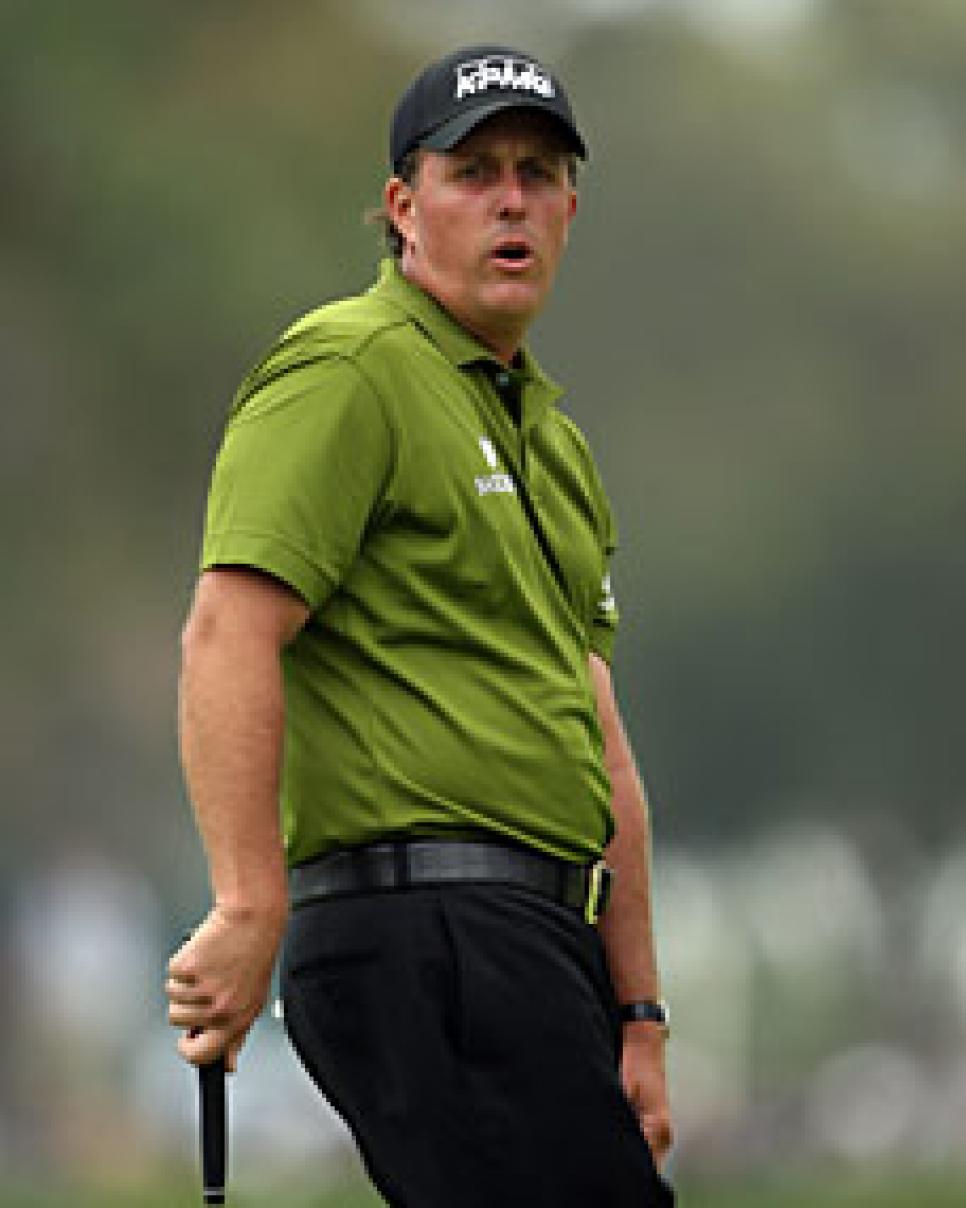News
Phil Mickelson and the Tale of the Missing Driver

A hard, analytical look at the numbers reveals the truth about Phil's decision to leave the driver out of his bag.
The Mickelson strategy, to jettison his driver and carry only a 3-wood (and five wedges), was based on the assumption that he'd improve his score by trading distance for accuracy off the tee. In the end Mickelson hit 25 fairways in 52 chances, placing him last among players who played all four rounds. Clearly, the decision did not turn out well, but that doesn't mean it wasn't rational.
With proper execution could sacrificing 25 to 40 yards per tee make sense? Did Phil do a spreadsheet model to look at the trade-offs? Well I did. Here are the results:
First, let's examine the cost of playing from the rough. Based on 2006 PGA Tour ShotLink data, here are the average scores for all pros on par-4 holes for different yardages from the flagstick and for different locations, namely fairway, intermediate rough and primary rough:
[Ljava.lang.String;@4fef9678
Conclusion: Being in the fairway is better than being in the rough at any given distance. It is also always better to be closer to the hole for any specific category of lie, with the only exception being the very slight upturn in scores from less than 100 yards, a quirk due probably to difficult conditions in green complexes for short par 4s. These conclusions are no surprise.
However, according to these numbers, the trade-off (losing accuracy to gain distance) is more costly than the typical pro might have bet. If he gains 100 yards, that yields nothing, score-wise, if his ball lands in the primary rough. The average score with the ball in the fairway 190 to 220 yards from the flagstick (4.03) is just slightly better than (essentially the same as) from inside 100 yards but in the primary rough (4.04.) Startling, eh? In other words, a pro could walk out and drop a ball in the fairway 200 yards out, and he would have to move up 100 yards before he could drop it in the primary rough and have the same scoring average. The difference is 30 yards when comparing fairway to intermediate rough. Maybe trying to get 20 more yards out of a new driver is not as smart as getting 20 percent more in the fairway. Even at more than 220 in the fairway, the pros score almost as well as they do from 130 to 160 in the rough!
With information like this, it appears (at least initially) that Phil chose wisely. But our analysis is not complete.
The cost of missing a fairway and hitting it into the primary rough is about 0.2 strokes at 100 yards out and 0.3 strokes at 200 yards out. Said another way, the average difference in score from the fairway versus the rough at 100 yards away is 0.2 strokes (about .07 strokes on average for intermediate rough). Conversely, the average tour player picks up about 0.2 strokes for being 100 yards closer if both balls are in the fairway and 0.3 for 100 yards if both balls are in the primary rough.
So what do all these facts tell us? First, if Phil hit 100 percent of his tee shots in the fairway 200 yards from the green, he would be no worse off than if he hit 100 percent of his tee shots in the primary rough but 100 yards closer to the green. Second, by giving up, say, 30 yards, but not improving his accuracy, he would lose just less than 0.1 strokes per hole.
So the fundamental question is: How much accuracy improvement must you gain to justify losing 30 yards off the tee? From this data, if Phil hit 65 percent of his drivers in the fairway, he would have to hit 100 percent of his 3-woods there to yield the same average score. The average at the Open is closer to 60 percent so an expectation of 65 percent for Phil is not unreasonable. However, an expectation of 100 percent of his 3-woods ending up in the fairway is not realistic. This is a player who came to the 54th hole at Bethpage needing a birdie at the short, par-4 to tie Tiger for the lead, picked a 3-iron for his tee shot (very rational), but hit it as far left as his drive at the 72nd hole at Winged Foot. Getting any club in the fairway is a struggle for Phil.
Therefore, from this analysis it appears that Phil's decision to remove the driver was not a rational one. It did not work for Seve Ballesteros in '83 at Oakmont and it really did not work for Phil in '08. My advice: Hit it hard, Phil, and go find it.

